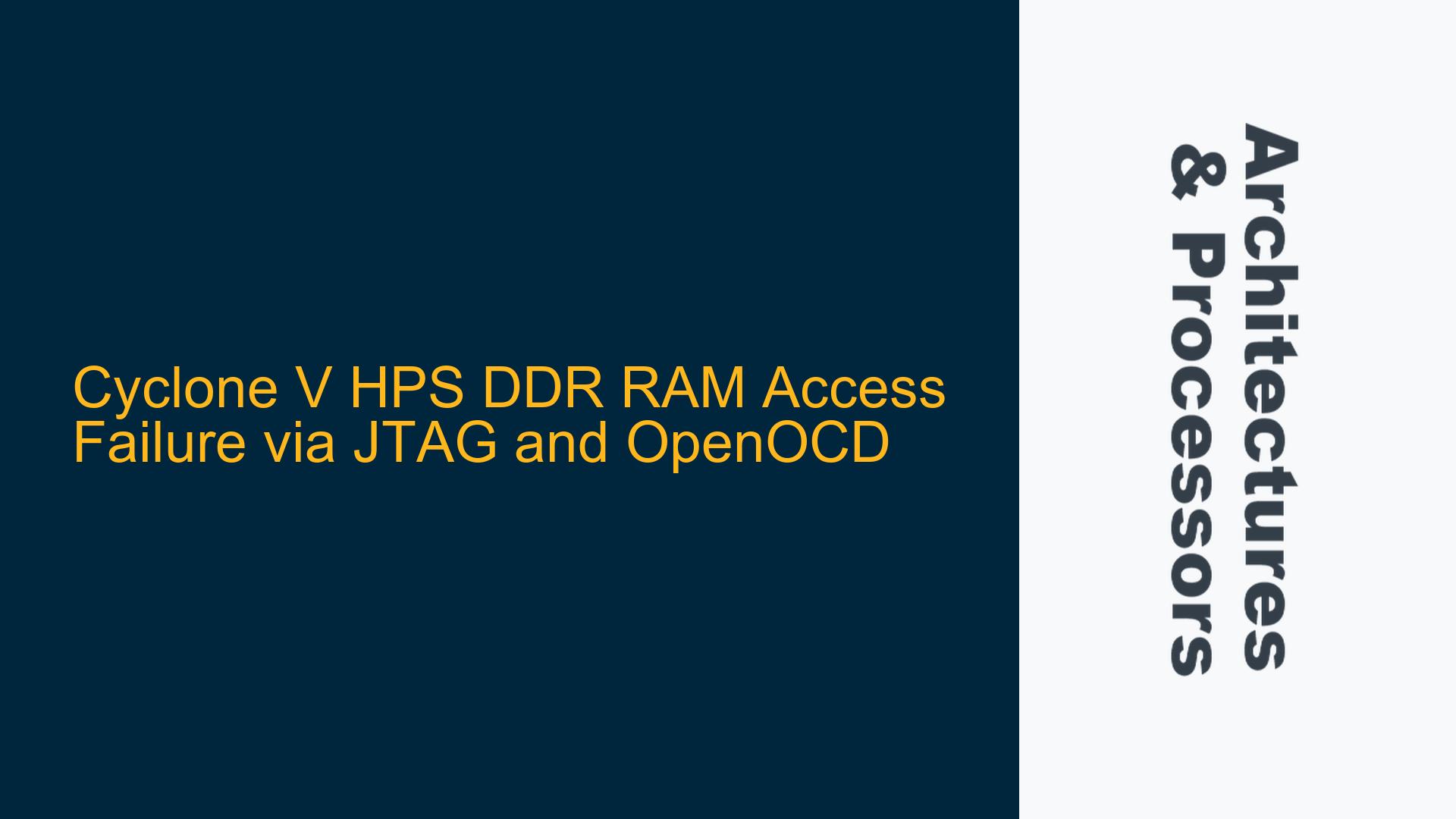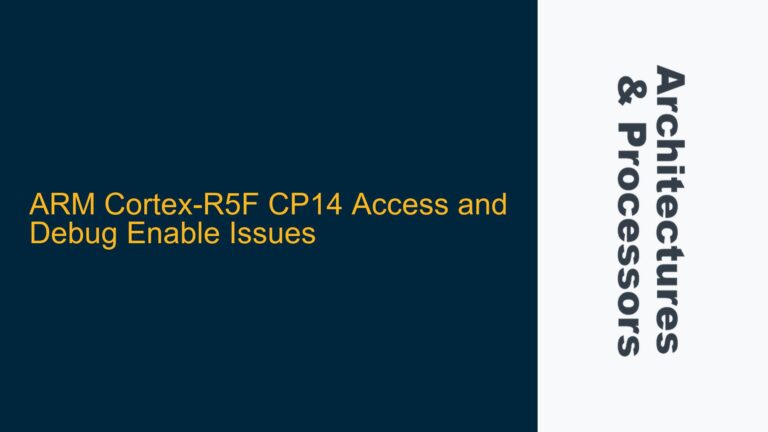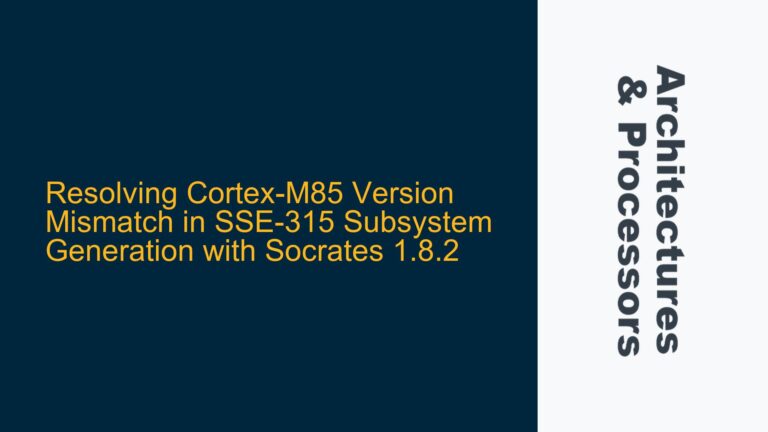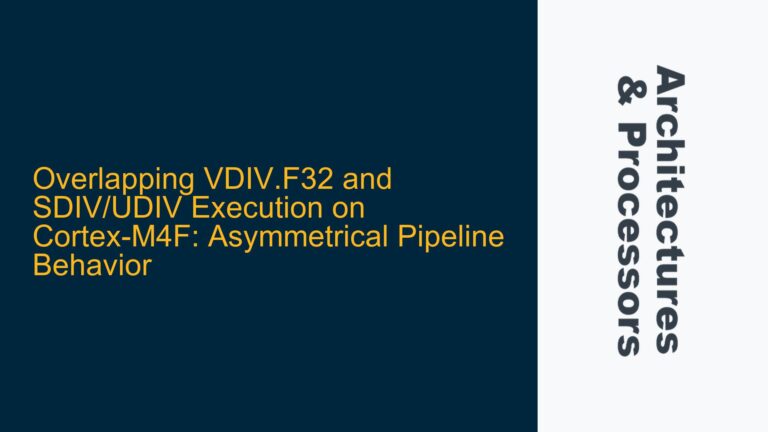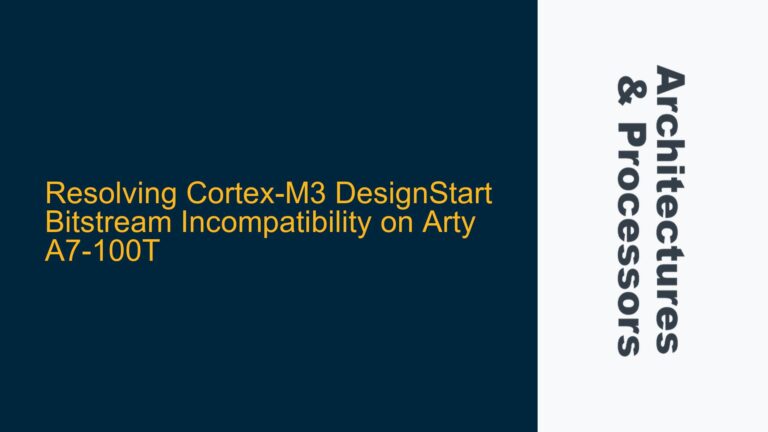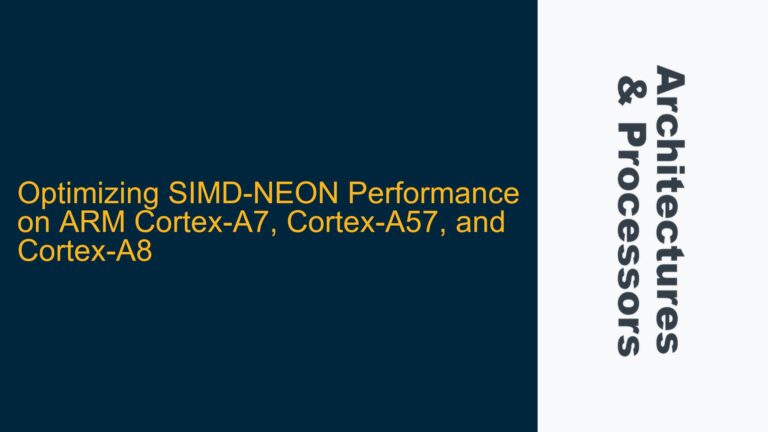ARM Cortex-A9 DDR RAM Access Issues During JTAG Debugging
The core issue revolves around the inability to reliably access DDR RAM on the Cyclone V HPS (Hard Processor System) via JTAG using OpenOCD. The user successfully halts the Cortex-A9 processor and can read from certain memory locations (e.g., 0x00000000), but encounters errors when attempting to access other regions, such as 0x00010000. The goal is to control the SDRAM Controller Subsystem to read from and write to DDR RAM, but the process fails at specific memory addresses. This suggests a potential misconfiguration or hardware-software interaction issue related to the DDR controller, memory mapping, or JTAG debug access.
The Cyclone V HPS integrates a dual-core ARM Cortex-A9 processor with a complex memory subsystem, including an SDRAM controller that manages DDR RAM. The JTAG interface, managed by OpenOCD, provides low-level access to the processor and memory. However, the DDR RAM access failure indicates that the debugger is unable to correctly interface with the SDRAM controller or the memory map is not properly configured. This issue is critical for developers relying on JTAG for debugging and firmware development, as it prevents them from inspecting or modifying DDR RAM contents during runtime.
DDR Controller Initialization and Memory Mapping Misconfigurations
One of the primary causes of this issue is improper initialization of the DDR controller or incorrect memory mapping configurations. The Cyclone V HPS requires precise initialization of the SDRAM controller to ensure proper access to DDR RAM. If the controller is not initialized correctly, certain memory regions may become inaccessible or return errors during read/write operations. This is particularly relevant when using JTAG, as the debugger relies on the hardware being in a known state.
Another potential cause is the memory map configuration. The Cyclone V HPS has a specific address space layout, and accessing regions outside the mapped DDR RAM can result in errors. The user’s OpenOCD configuration file shows that the Cortex-A9 cores are targeted, but there is no explicit configuration for the DDR controller or memory map. This omission can lead to mismatches between the expected and actual memory layout, causing access failures.
Additionally, the JTAG interface itself may introduce timing or synchronization issues. The OpenOCD configuration sets the adapter speed to 1000 kHz, which is relatively slow but should be sufficient for debugging. However, if the JTAG interface is not properly synchronized with the DDR controller, it may fail to access certain memory regions. This is especially true for high-speed DDR RAM, where timing is critical.
Configuring DDR Controller and Debugging Memory Access with OpenOCD
To resolve the DDR RAM access issue, the first step is to ensure that the DDR controller is properly initialized. This involves verifying the SDRAM controller configuration in the Cyclone V HPS. The controller must be set up with the correct timing parameters, memory size, and addressing scheme. If the controller is not initialized, the DDR RAM will not be accessible, and JTAG operations will fail. The user should consult the Cyclone V HPS technical reference manual to confirm the correct initialization sequence and parameters.
Next, the memory map must be explicitly configured in the OpenOCD script. The current configuration targets the Cortex-A9 cores but does not define the DDR RAM regions. The user should add memory map definitions to the OpenOCD script to ensure that the debugger is aware of the DDR RAM layout. This can be done using the target cortex_a command with the appropriate base address and size parameters. For example:
$_TARGETNAME1 configure -work-area-phys 0x00000000 -work-area-size 0x10000
This command defines a work area in the DDR RAM region, allowing the debugger to access it. The user should adjust the base address and size to match the actual DDR RAM layout.
Another critical step is to verify the JTAG interface configuration. The adapter speed of 1000 kHz is generally sufficient, but the user should ensure that the JTAG interface is properly synchronized with the DDR controller. This can be done by adding synchronization commands to the OpenOCD script, such as arm7_9 dcc_downloads enable or arm7_9 fast_memory_access enable. These commands optimize the JTAG interface for memory access and can resolve timing-related issues.
If the issue persists, the user should enable detailed logging in OpenOCD to diagnose the problem. The log_output command can be used to redirect log output to a file, and the debug_level command can increase the verbosity of the logs. This will provide insights into the exact point of failure, such as whether the issue is related to the JTAG interface, DDR controller, or memory map.
Finally, the user should consider the possibility of hardware issues. Faulty PCB traces, incorrect DDR RAM connections, or power supply instability can all cause memory access failures. The user should verify the hardware design and ensure that the DDR RAM is properly connected and powered. If necessary, a logic analyzer or oscilloscope can be used to inspect the JTAG and DDR signals for anomalies.
By following these steps, the user should be able to resolve the DDR RAM access issue and successfully control the SDRAM Controller Subsystem via JTAG and OpenOCD. Proper initialization, configuration, and debugging are key to ensuring reliable access to DDR RAM in the Cyclone V HPS.
